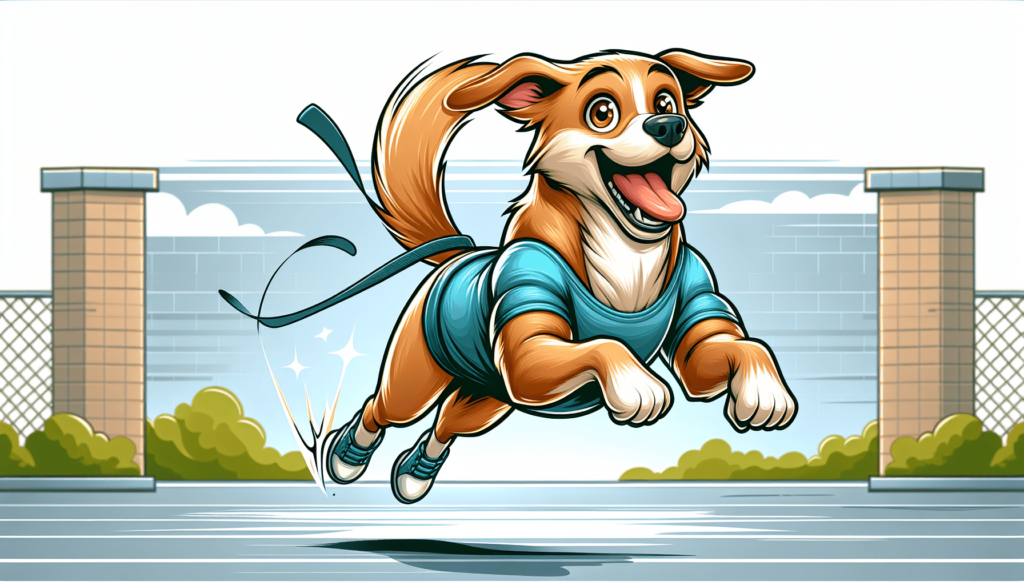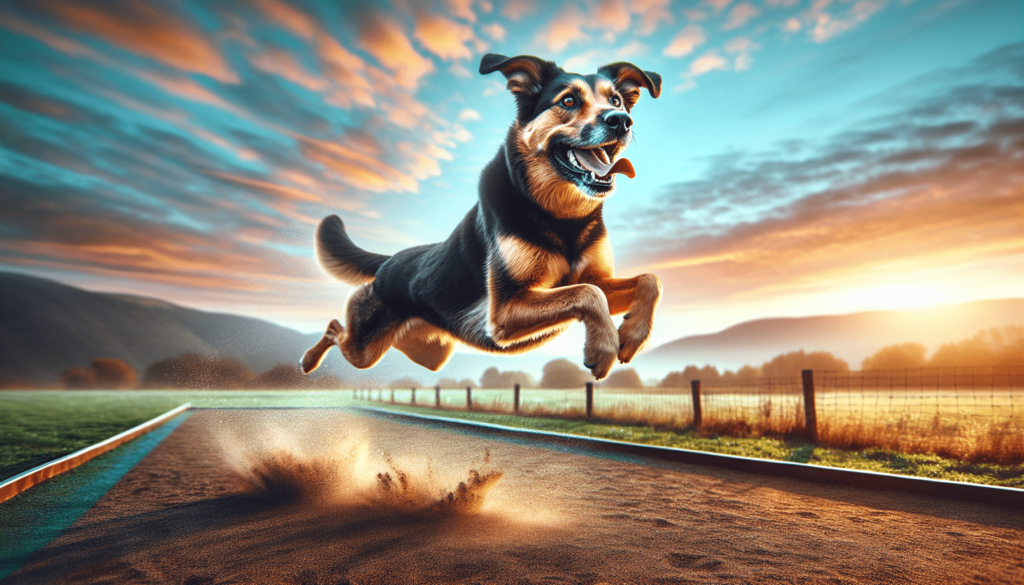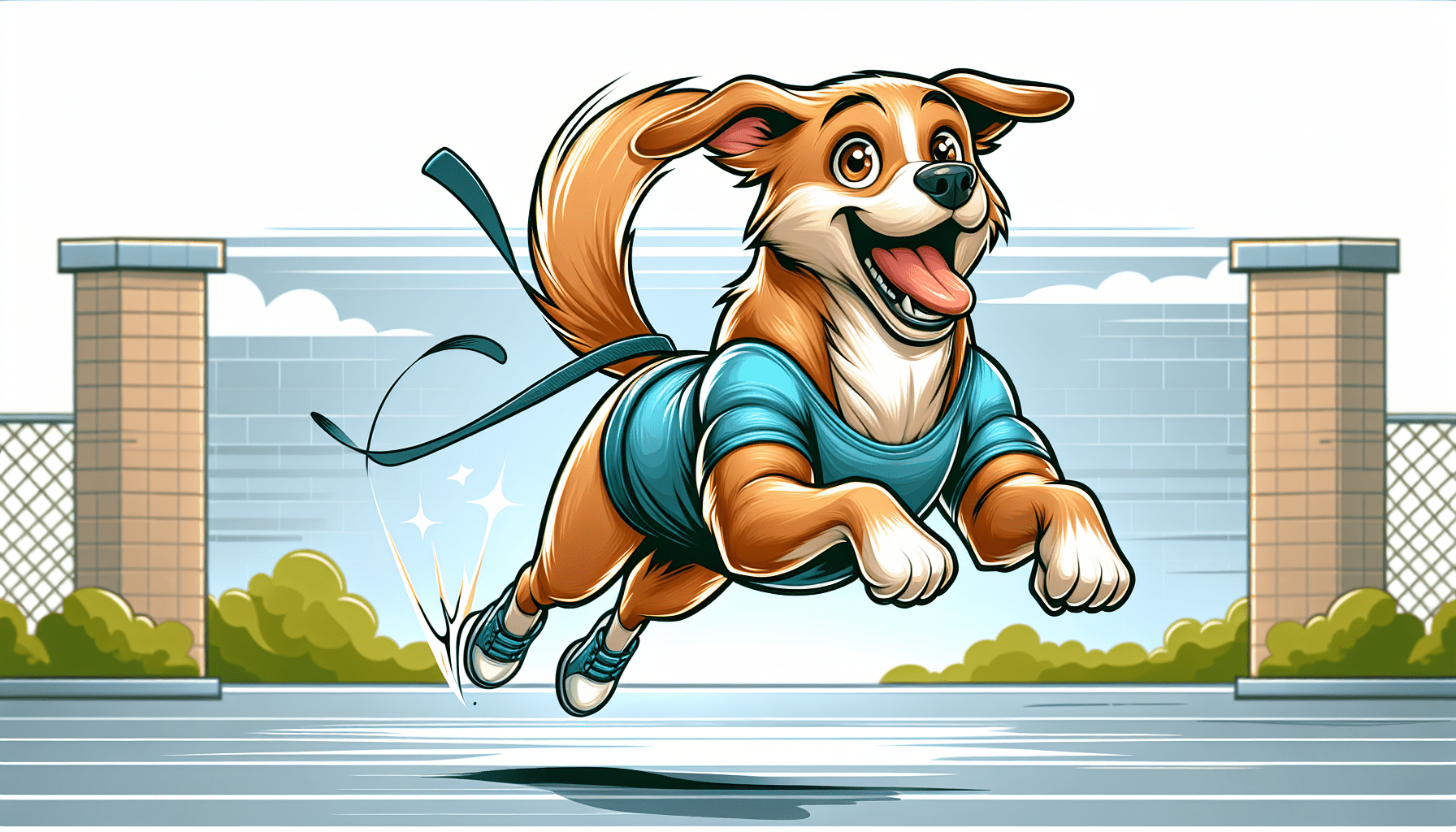Are you looking for ways to keep your furry friend healthy and active? Look no further! In this article, we will explore a variety of exercises that will keep your canine companion fit and happy. From running to swimming to playing interactive games, we’ve got you covered with fun and engaging activities that will help improve your dog’s overall health and well-being. So, grab a leash and let’s get started on the path to a healthier and happier dog!
Importance of Canine Fitness
Keeping your dog physically fit and mentally stimulated is essential for their overall health and wellbeing. Regular exercise not only helps improve their physical health but also provides mental stimulation and prevents obesity and related health issues. As a responsible dog owner, it is crucial to prioritize the fitness of your beloved canine companion.
Physical health benefits
Engaging in regular exercise helps promote cardiovascular strength, boosts the immune system, and enhances muscle tone and flexibility. A physically fit dog is less prone to injuries and can better handle the physical demands of everyday activities. Regular exercise also helps maintain a healthy weight, reducing the risk of obesity and associated health problems such as joint issues, heart disease, and diabetes.
Mental health benefits
Just like humans, dogs need mental stimulation to stay happy and healthy. Regular exercise helps alleviate boredom, reduces anxiety and destructive behaviors, and promotes mental sharpness. Dogs who lack mental stimulation may become frustrated or develop behavioral problems. By engaging in fun and challenging activities, you can keep your furry friend mentally stimulated and content.
Prevention of obesity and related health issues
Obesity is a growing concern among dogs, and it can lead to numerous health problems. Regular exercise helps burn calories, manage weight, and prevent obesity. Along with a balanced diet, exercise plays a vital role in maintaining your dog’s overall health and prolonging their lifespan. By getting your dog moving, you’re actively working towards preventing obesity and its associated health issues.
Consulting with a Veterinarian
Before starting any exercise program for your dog, it is imperative to consult with a veterinarian to ensure their safety and well-being. Here are a few key points to discuss with your vet:
Before starting an exercise program
It is crucial to discuss your dog’s overall health and medical history with your veterinarian before starting any exercise program. Certain underlying conditions, such as heart or respiratory issues, may require modifications to exercise routines. Your vet will assess your dog’s health and provide guidance on the types and intensity of exercises suitable for them.
Considering the dog’s age, breed, and health condition
Age, breed, and health conditions play a significant role in determining the appropriate exercise regimen for your furry friend. Puppies and older dogs may have different exercise needs and limitations. Certain breeds may require more intense workouts, while others may benefit from low-impact exercises. Your vet can help tailor an exercise program that suits your dog’s specific needs.
Getting professional advice on exercise intensity and duration
Your veterinarian can provide valuable guidance on the intensity and duration of exercise sessions. Factors such as your dog’s current fitness level, energy level, and overall health will be taken into consideration. It is important to start slowly and gradually increase the intensity and duration of exercises to avoid overexertion or injuries.

Cardiovascular Exercises
Cardiovascular exercises are excellent for building endurance, increasing heart health, and improving overall fitness for your furry friend. Here are a few activities to get your dog’s heart pumping:
Brisk walks
Going for regular walks is one of the simplest and most effective ways to keep your dog physically fit. Aim for brisk walks of at least 30 minutes, ideally twice a day. Vary the routes and terrain to keep it interesting and engaging for your dog. Be mindful of their fitness level, gradually increasing the duration and intensity of the walks as they become fitter.
Running or jogging
If you enjoy running or jogging, consider bringing your dog along. Running together can be a fun bonding activity while providing an excellent cardiovascular workout. Start with shorter distances and gradually increase the duration and intensity as your dog becomes accustomed to running. Remember to alternate between running and walking to prevent overexertion.
Swimming
Swimming is a fantastic low-impact exercise that is gentle on your dog’s joints while providing an excellent full-body workout. If your dog enjoys the water, swimming can be a great way to cool off during hot summer months. Ensure safety by using a dog life jacket if needed and always supervise your dog while they swim.
Muscle-Strengthening Exercises
Strong muscles are important for your dog’s overall stability, mobility, and coordination. Incorporate these muscle-strengthening exercises into your dog’s fitness routine:
Squat exercises
Squat exercises can help strengthen your dog’s leg muscles and improve their overall stability. To perform squats, have your dog stand with their front paws on a raised platform or step. Then, gently encourage them to sit back into a squat position. Repeat this exercise in sets of 10, gradually increasing the number of repetitions over time.
Tug-of-war games
Playing tug-of-war with your dog not only strengthens their muscles but also provides mental stimulation and strengthens the bond between you. Ensure that you use a safe and sturdy toy specifically designed for tug-of-war games. Encourage your dog to pull against your resistance, keeping their whole body engaged.
Agility training
Agility training is a fun and stimulating way to enhance your dog’s strength, agility, and coordination. Set up an agility course in your backyard or enroll in a local agility class. Through activities such as weaving through poles, jumping over hurdles, and maneuvering through tunnels, your dog will develop lean muscles and improve their overall physical fitness.

Balance and Coordination Exercises
Balance and coordination exercises are essential for improving your dog’s stability, body awareness, and overall motor skills. These exercises help your dog confidently navigate various terrains and stay agile. Consider the following exercises:
Walking on narrow surfaces
Encourage your dog to walk on narrow surfaces such as balance beams, logs, or even narrow planks. This helps improve their balance and coordination. Start with wider surfaces and gradually decrease the width as your dog becomes more skilled.
Using balance discs or cushions
Balance discs or cushions are specially designed to challenge your dog’s balance and stability. Place them on the floor and encourage your dog to stand or sit on them. This forces them to engage their core muscles and maintain balance. Start with short durations and gradually increase the time as your dog becomes more comfortable.
Jumping over obstacles
Set up small, safe obstacles such as low hurdles or cones and encourage your dog to jump over them. This exercise helps improve your dog’s coordination, strength, and proprioception. Always ensure that the obstacles are appropriate for your dog’s size and fitness level to avoid injuries.
Mental Stimulation Activities
Physical exercise is important, but mental stimulation is equally crucial for keeping your dog happy and healthy. Engage your dog’s brain with these mentally stimulating activities:
Puzzle toys and treat dispensers
Puzzle toys and treat dispensers are fantastic tools to challenge your dog’s problem-solving skills and keep them mentally engaged. Fill these toys with treats or kibble, requiring your dog to figure out how to get the rewards. These toys provide mental stimulation and prevent boredom.
Hide and seek games
Hide and seek games are a great way to mentally stimulate your dog and reinforce their recall skills. Start by hiding in an easy-to-find spot and calling your dog to find you. Gradually increase the difficulty level by hiding in more challenging spots. Reward your dog with praise and treats when they successfully find you.
Teaching new tricks or commands
Teaching your dog new tricks or commands not only stimulates their mind but also strengthens your bond. Start with simple commands and gradually progress to more complex tricks. Use positive reinforcement techniques such as treats and praise to motivate and reward your dog for their efforts.
Interactive Playtime
Interactive playtime allows you to spend quality time with your dog while providing both mental and physical exercise. Incorporate these activities into your play sessions:
Fetching and retrieving games
Playing fetch is a classic and enjoyable game for both you and your dog. Throw a ball or toy and encourage your dog to retrieve it. This activity not only strengthens their muscles but also provides mental stimulation and reinforces their retrieving skills.
Chasing bubbles or flying discs
Dogs love the excitement of chasing bubbles or flying discs. Invest in safe and dog-friendly bubbles or flying discs, and let the fun begin. Make sure there is enough space for your dog to run and jump freely. This activity helps improve their agility, coordination, and speed.
Tug-of-war with safe toys
Tug-of-war games are not only muscle-strengthening exercises but also interactive playtime that strengthens the bond between you and your dog. Use safe and sturdy toys specifically designed for tug-of-war and engage in a friendly game with your furry friend. Remember to let your dog win occasionally to keep it enjoyable for them.
Dog Sports and Activities
If you want to take your dog’s fitness to the next level and explore various activities, there are several dog sports and activities to consider:
Agility competitions
Agility competitions involve your dog navigating through a challenging obstacle course within a specified time frame. This high-energy sport requires speed, agility, and excellent communication between you and your dog. Participating in agility competitions provides mental and physical exercise while fostering a strong bond between you and your dog.
Flyball
Flyball is a fast-paced relay race where dogs jump over hurdles, retrieve a ball from a box, and return to their handler. This high-energy sport is suitable for dogs with a strong retrieving instinct and high drive. Flyball helps build agility, speed, and improves overall coordination.
Canicross
Canicross is a sport that involves running or jogging with your dog while attached to a waist belt. The dog wears a specialized harness, and both of you work as a team to cover various terrains. This sport promotes physical fitness, endurance, and strengthens the bond between you and your dog.
Safety Considerations
While exercise is essential, it is crucial to prioritize your dog’s safety during every activity. Keep the following safety considerations in mind:
Warming up and cooling down
Just like humans, dogs benefit from warming up before exercise and cooling down afterward. Start with a few minutes of light exercise and gradually increase the intensity. After the main exercise session, allow your dog to cool down with a gentle walk to prevent muscle strain or injury.
Avoiding extreme weather conditions
Be mindful of extreme weather conditions such as extreme heat or cold. Exercise your dog during the cooler parts of the day, such as early morning or late evening, to prevent heatstroke or frostbite. Provide access to shade and fresh water at all times during outdoor activities.
Using proper equipment and protective gear
Invest in appropriate equipment such as leashes, harnesses, and collars that fit your dog properly. Use sturdy toys and gear designed for the specific activity. For certain activities, such as swimming or hiking in rough terrain, consider using life jackets or boots to protect your dog from potential hazards.
Monitoring Progress and Adjusting
Monitoring your dog’s progress is crucial to ensure their continued fitness and well-being. Consider the following strategies:
Regular health check-ups
Schedule regular check-ups with your veterinarian to monitor your dog’s overall health and fitness. Your vet can assess any changes in weight, mobility, or other health indicators and suggest modifications to the exercise routine if needed.
Tracking improvements in endurance and strength
Keep a log of your dog’s exercise activities and track their progress over time. Note their energy levels, endurance, and any improvements in muscle strength. This can help you adjust the exercise routine and set new goals as your dog becomes fitter.
Modifying exercises as the dog progresses
As your dog becomes more physically fit, you may need to modify exercises to continue challenging them. Increase the duration, intensity, or add variations to the existing exercises to keep your dog engaged and progressing. Consult with your vet or a professional dog trainer for guidance on modifying your dog’s exercise routine.
Remember, every dog is unique, and what works for one may not work for another. Pay attention to your dog’s individual needs and adjust their exercise routine accordingly. By prioritizing canine fitness and providing a variety of physical and mental activities, you can ensure a healthy and happy companion for years to come.

